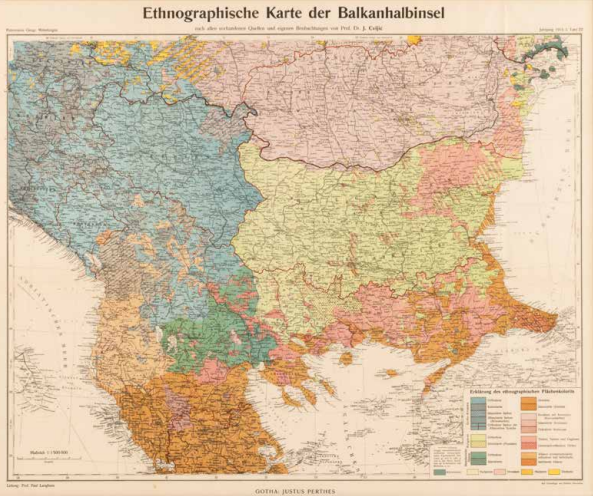Ethnographic map of the Balkans
Ethnographic maps of the Balkans show significant differences, depending on the maker and the country of origin. The choice of relevant language data (mother tongue, school language, church language, market language or official language) depends on the territorial claims that might be legitimized in this way. Especially around Ottoman Macedonia, such ideological visions clash. The map by Professor Jovan Cvijić, a geographer and cartographer from Belgrade,also uses historical categories. For example, he divides Kosovo between Serbs, Albanian Serbs, and Albanians, creating a Serbian majority. In Macedonia, Cvijić distinguishes between Serbs, Bulgarians, and Macedonian slaves (Orthodox as well as Muslim). This intermediate group must neutralize the farreaching claims of Bulgarian ethnographic maps. While the Bulgarian army concentrated on the Thracian front during the First Balkan War (1912-13), Macedonia was largely split up between Serbia and Greece. This led to the Second Balkan War (1913), which Bulgaria lost. The red dotted line still marks the area where Serbian language features, folk songs and traditional festivals would dominate. For example, Macedo slaves are ‘taken in’ to Serbia at the last minute.

J. Cvijić, Ethnographische Karte der Balkanhalbinsel nach allen vorhandenen Quellen und eigene Beobachtungen (Ethnographic map of the Balkan Peninsula based on all available sources and personal observations), from: Petermanns Geographische Mittheilungen 59er Band (Petermann’s Geographical Communications Volume 59), Gotha 1913. Coll. S/T W.2c.9, 62 x 75 cm.
